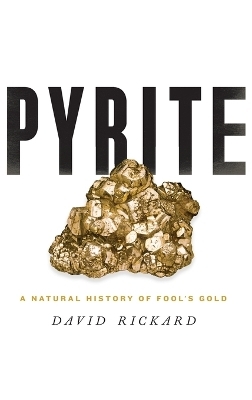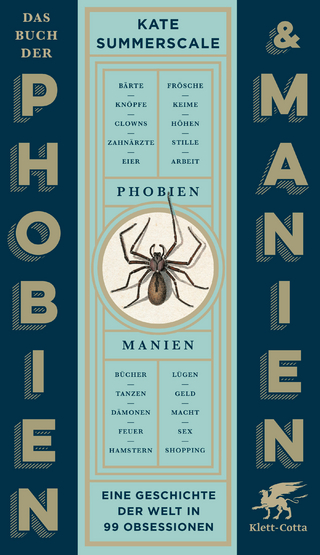
Pyrite
A Natural History of Fool's Gold
Seiten
2015
Oxford University Press Inc (Verlag)
978-0-19-020367-2 (ISBN)
Oxford University Press Inc (Verlag)
978-0-19-020367-2 (ISBN)
An accessible exploration of pyrite's influence on human history, culture, and science, revealing how fool's gold has become a universal symbol for everything overvalued.
Most people have heard of pyrite, the brassy yellow mineral commonly known as fool's gold. But despite being the most common sulfide on the earth's surface, pyrite's bright crystals have attracted a noteworthy amount of attention from many different cultures, and its nearly identical visual appearance to gold has led to tales of fraud, trickery, and claims of alchemy. Pyrite occupies a unique place in human history: it became an integral part of mining lore in
America during the 19th century, and it has a presence in ancient Sumerian texts, Greek philosophy, and medieval poetry, becoming a symbol for anything overvalued.
In Pyrite, geochemist and author David Rickard blends basic science and historical narrative to describe the many unique ways pyrite makes appearances in our world. He follows pyrite back through the medieval alchemists to the ancient Arab, Chinese, Indian, and Classical worlds, showing why the mineral was central to the development of these various ancient cultures. Pyrite can be tracked to the beginnings of humankind, and Rickard reveals how it contributed to the origins of our art
and storytelling and even to our biologic development as humans. But pyrite has unique scientific properties as well: the book distills how oxidation makes fool's gold look like a precious metal, and shows how pyrite can choke out oxygen from water, creating large "dead zones " in our oceans. Rickard analyzes
pyrite's role in manufacturing sulfuric acid, a compound used for everything from cleaning drains to fertilizing crops. Its influence extends from human evolution and the formation of societies, through science and industry, to our understanding of ancient, modern, and future earth environments. Energetic and accessible, Pyrite is the first book to show readers the history and science of one of the world's most fascinating minerals.
Most people have heard of pyrite, the brassy yellow mineral commonly known as fool's gold. But despite being the most common sulfide on the earth's surface, pyrite's bright crystals have attracted a noteworthy amount of attention from many different cultures, and its nearly identical visual appearance to gold has led to tales of fraud, trickery, and claims of alchemy. Pyrite occupies a unique place in human history: it became an integral part of mining lore in
America during the 19th century, and it has a presence in ancient Sumerian texts, Greek philosophy, and medieval poetry, becoming a symbol for anything overvalued.
In Pyrite, geochemist and author David Rickard blends basic science and historical narrative to describe the many unique ways pyrite makes appearances in our world. He follows pyrite back through the medieval alchemists to the ancient Arab, Chinese, Indian, and Classical worlds, showing why the mineral was central to the development of these various ancient cultures. Pyrite can be tracked to the beginnings of humankind, and Rickard reveals how it contributed to the origins of our art
and storytelling and even to our biologic development as humans. But pyrite has unique scientific properties as well: the book distills how oxidation makes fool's gold look like a precious metal, and shows how pyrite can choke out oxygen from water, creating large "dead zones " in our oceans. Rickard analyzes
pyrite's role in manufacturing sulfuric acid, a compound used for everything from cleaning drains to fertilizing crops. Its influence extends from human evolution and the formation of societies, through science and industry, to our understanding of ancient, modern, and future earth environments. Energetic and accessible, Pyrite is the first book to show readers the history and science of one of the world's most fascinating minerals.
David Rickard is Emeritus Professor at Cardiff University. His writings have appeared in numerous journals, including Chemical Geology, Geochimica Et Cosmochimica Acta, and Earth and Planetary Science.
Preface ; Prologue ; Chapter 1. Foole's Gold: ; Chapter 2. Pyrite and the origins of civilization ; Chapter 3. What is pyrite? ; Chapter 4. Crystals and atoms ; Chapter 5. Hell and black smokers ; Chapter 6. Microbes and minerals ; Chapter 7. Acid Earth ; Chapter 8. Pyrite and the global environment ; Chapter 9. Pyrite and the origin of life. ; Chapter 10. Full circle ; Epilogue
| Zusatzinfo | 58 illustrations |
|---|---|
| Verlagsort | New York |
| Sprache | englisch |
| Maße | 162 x 241 mm |
| Gewicht | 564 g |
| Themenwelt | Sachbuch/Ratgeber ► Natur / Technik ► Natur / Ökologie |
| Geschichte ► Teilgebiete der Geschichte ► Kulturgeschichte | |
| Naturwissenschaften ► Geowissenschaften ► Geologie | |
| Naturwissenschaften ► Geowissenschaften ► Mineralogie / Paläontologie | |
| ISBN-10 | 0-19-020367-6 / 0190203676 |
| ISBN-13 | 978-0-19-020367-2 / 9780190203672 |
| Zustand | Neuware |
| Haben Sie eine Frage zum Produkt? |
Mehr entdecken
aus dem Bereich
aus dem Bereich
der stille Abschied vom bäuerlichen Leben in Deutschland
Buch | Hardcover (2023)
C.H.Beck (Verlag)
23,00 €
vom Mittelalter bis zur Gegenwart
Buch | Softcover (2024)
C.H.Beck (Verlag)
12,00 €
eine Geschichte der Welt in 99 Obsessionen
Buch | Hardcover (2023)
Klett-Cotta (Verlag)
22,00 €


